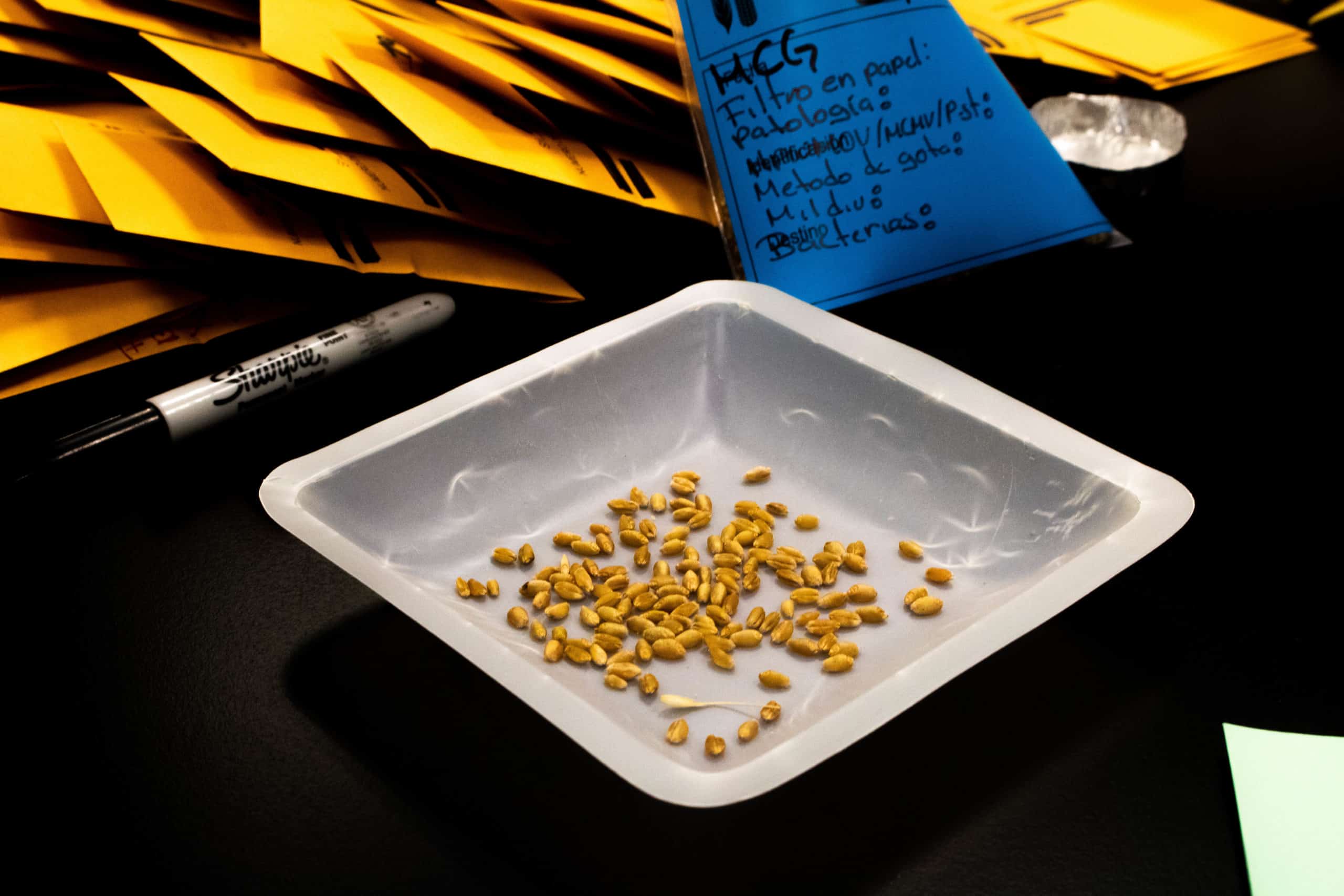Prevention is better than cure
- From
-
Published on
16.12.19
- Impact Area

Whenever seed is transferred between countries, continents or regions there is an inherent risk that new plant pathogens could spread to previously non-infested areas — with potentially devastating consequences. FAO estimates that these pathogens are responsible for the loss of up to 40% of global food crops, and for trade losses in agricultural products exceeding $220 billion each year.
With old and new pests and diseases causing devastation across the world, it is becoming increasingly important to consider plant health. This is especially true at the International Maize and Wheat Improvement Center (CIMMYT), an organization which processes and distributes enormous quantities of seed each year and in 2019 alone sent over 10,000 tons to more than 100 partners in Africa, the Americas, Asia and Europe.
Amos Alakonya joined CIMMYT in July 2019, and as head of the organization’s Seed Health Unit he is acutely aware of the need to mitigate risk throughout the seed production value chain.
In the lead up to this year’s International Phytosanitary Awareness Week, the plant pathologist sits down to discuss pests, screening procedures, and explain why everyone should be talking about seed health.
Related news
-

Australia partners with International Livestock Research Institute to upskill researchers from Africa and Asia
International Livestock Research Institute (ILRI)13.11.25-
Food security
-
Poverty reduction, livelihoods & jobs
Australia has joined forces with the International Livestock Research Institute (ILRI) to support th…
Read more -
-

Next-gen rice lines top check varieties at 7.5 t/ha in ESA
International Rice Research Institute (IRRI)11.11.25-
Food security
MOROGORO, Tanzania (8 October 2025) — Elite rice lines are outperforming the current popular varie…
Read more -
-

QTL Profiling Now Live on EBS
International Rice Research Institute (IRRI)11.11.25-
Food security
QTL profiling is now integrated into the EBS Platform’s MDA module. Teams across CGIAR research…
Read more -
